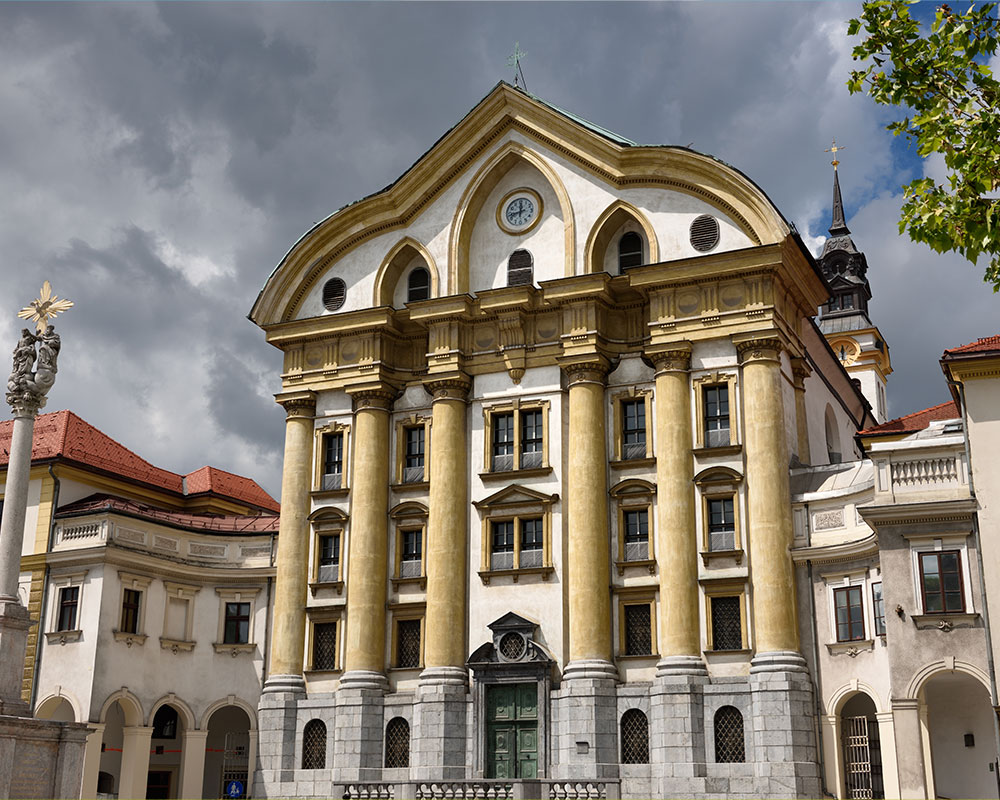See the buildings that changed the world
Europe is known for its stunning architecture. From Spain’s La Pedrera-Casa Milà to Germany’s Neuschwanstein Castle, creativity pulses through buildings from east to west. But let’s dive a little deeper. Did you know that several European architectural movements changed the look and feel of cities as far away as Chicago, Salvador, and Canberra? In fact, it’s no exaggeration to say that those cities would look totally different without the three movements we cover below. Keep reading to learn how the Neoclassical, Baroque, and Bauhaus philosophies changed the world.
Baroque
If you’ve ever visited Europe, you know Baroque architecture. It’s characterized by undulating forms, gorgeous curves, ornate (even gaudy) decorations, and the manipulation of light and shadow. Baroque emerged in the 17th century in response to what came before it: the Renaissance. What are some good examples of buildings in the Baroque style? Think about France’s Versailles Palace or St. Peter’s Basilica in Vatican City. After its emergence in Europe, the style of Baroque architecture spread elsewhere, taking root in places like Peru, the United States, Brazil, and Mexico and often intertwined with local cues. By the end of the mid-18th century, most architects moved away from the Baroque style. Yet its motifs remain highly influential in Europe and abroad, especially in North and South America. Nowadays, it is still celebrated and admired for its ornate beauty and historical significance.
Examples beyond Europe:
- Mission San Xavier del Bac, Arizona, USA
- Sainte-Anne-de-Beaupré Basilica, Quebec City, Quebec
- Basilica of Our Lady of Aparecida, Brazil
Must-see Baroque buildings in Europe
Because so many are famous, we suggest these hidden Baroque gems:
- Church of Saints Peter and Paul, Brno, Czech Republic
- Ursuline Church, Ljubljana, Slovenia
- The Church of the Annunciation, Kaunas, Lithuania

Neoclassical
The Neoclassical style emerged at the tail end of the Baroque period and was seen as a direct rebuke of what came before it. Architects of this era saw their predecessors as excessive and ornate and believed that they lost touch with a certain truth in their work. The Neoclassicists looked to the past to find their muse, namely to the ancient Greeks and Romans, in whom they saw a certain purity of form and approach. In buildings from the classical period, they found inspiration in simple geometric forms, clean lines, and a certain restraint. In little time, the ideas of the movement spread beyond the borders of Europe and became the dominant style in big parts of the world, such as Mexico, the United States, Argentina, and India. Though the style began to peter out by the middle of the 19th century when classical forms were no longer in vogue, it marked the world sizably and can be seen in some of the world’s most famous buildings.
Examples beyond Europe:
- The United States Capitol Building in Washington D.C., USA
- The Victoria Memorial in Kolkata, India
- The Cathedral of La Plata in La Plata, Argentina
Must-see Neoclassical buildings in Europe:
Again, here are the deep cuts!
- The Town Hall of Jyväskylä in Finland
- The Old Parliament House in Sofia, Bulgaria
- The Royal Palace of Aranjuez in Spain

Bauhaus
Bauhaus might be the most famous and influential school of architecture in the modern psyche. Founded in Weimar in 1919 by Walter Gropius, Bauhaus (a combination of the words building and house) rejected all the opulence and excess of the movements that came before it. Instead, Gropius instructed his students to emphasize the importance of craft, good design, and perhaps above all, functionality. Rather than seeing architecture as art alone, followers of Bauhaus cared about the relationship between art, architecture and society, as well modern ideals such as the need for functional, affordable objects for the masses. Though Bauhaus ended abruptly in the 1930s, its influence has had a lasting and truly global impact.
Examples beyond Europe:
- The Seagram building in New York City (designed by the eminent Bauhaus architect Ludwig Mies van der Rohe)
- National Theatre of Ghana in Accra, Ghana
- Torre Latinoamericana in Mexico City, Mexico
Must-see Bauhaus buildings in Europe
All off the beaten path!
- Einstein Tower in Potsdam, Germany
- Huis Sonneveld in Rotterdam, Netherlands
- Villa Tugendhat in Brno, Czech Republic
- Fagus Factory in Alfeld, Germany
Inside tip: if you’re a Bauhaus diehard, visit the Bauhaus Museum in Weimar. The museum’s building is comprised of bright, geometric, and clear-cut cube with five levels. At night, it is lit up, giving the area a bright center. The exhibition of the museum contains one of the most important Bauhaus collections in the world. Walter Gropius even selected the core objects himself!
